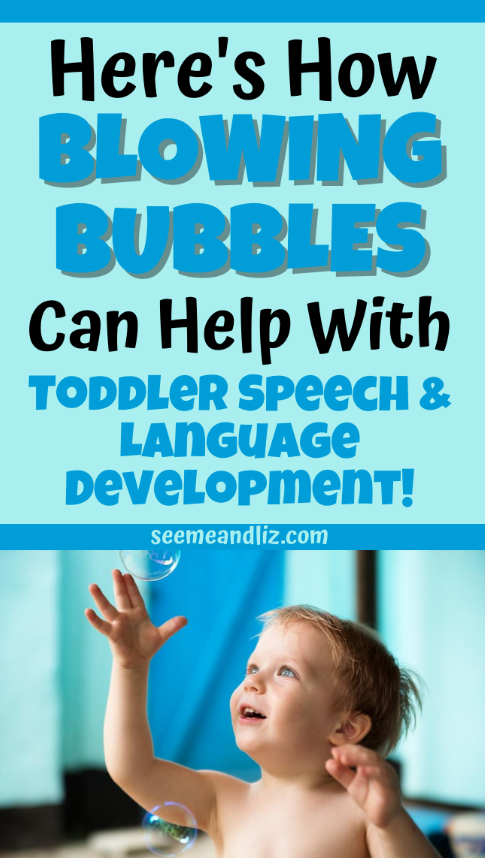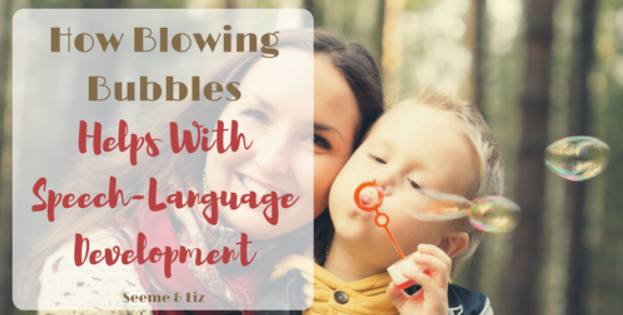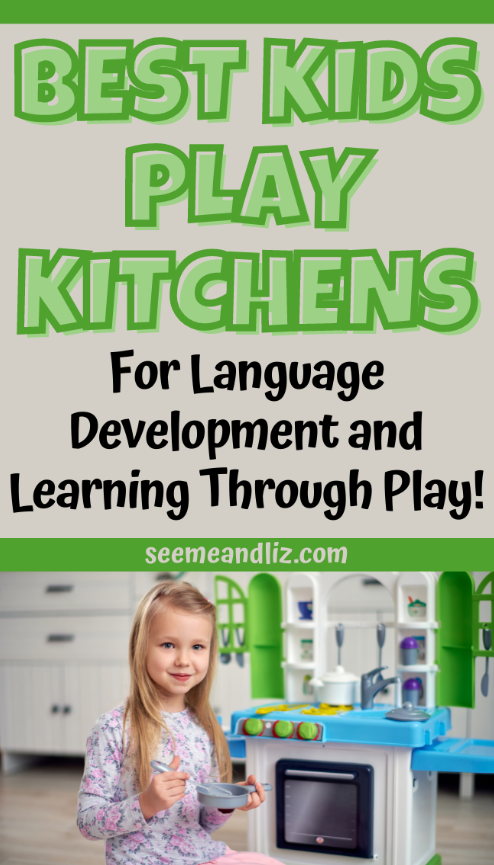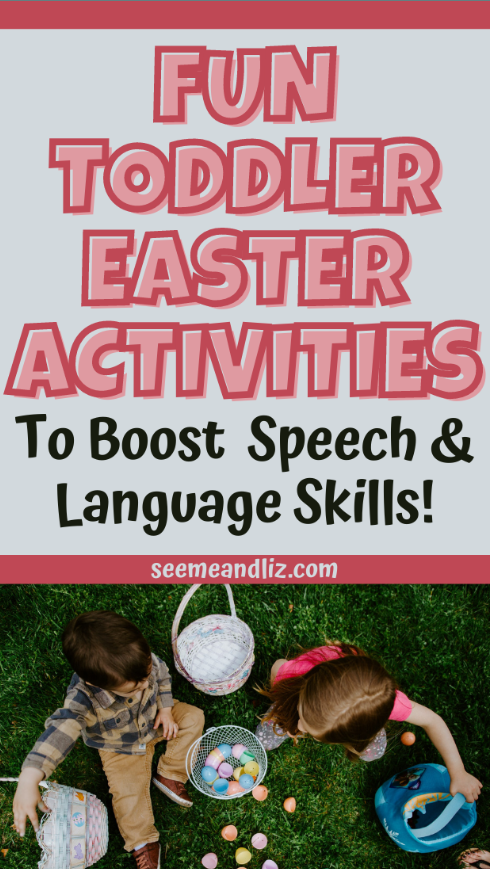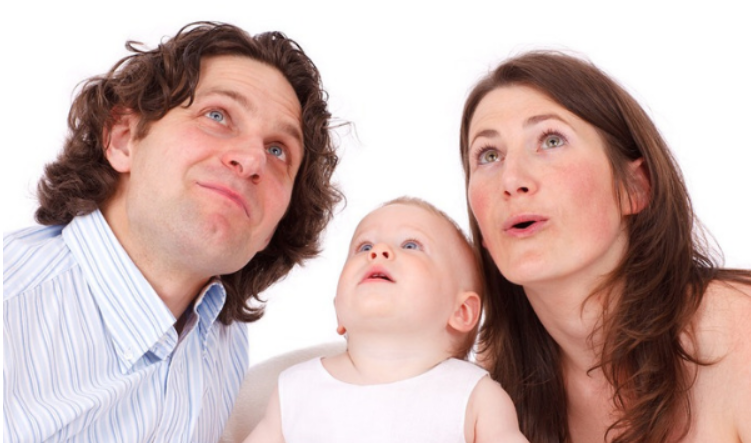Blowing bubbles with kids is such a simple activity, yet it’s packed with so many opportunities for learning.
There is so much more to bubbles than just some excitement and often, a big mess – but on a positive note, its basically just soap.
Did you know you can do some fun speech therapy activities for toddlers at home just by using bubbles?
Fun Bubble Speech Therapy Activities For Toddlers!
Bubbles Facilitate Early Sound Production
Early sounds include “p, b, m, h, y (as in you), n, w, d”.
Babies and toddlers typically start producing these sounds (not necessarily all at once) between 6 and 18 months.
Some children do take more time than others adding these sounds to their repertoire.
But, blowing bubbles allows you to focus on some of these sounds with your little one(s).
For example, you can blow a bubble for your child and then say the word “bubble” and then just say “buh, buh” while looking at your child.
See if they will imitate either just the sound or the entire word (this will depend on what stage your child is at with regards to sound and language development).
After the bubbles have disappeared, pause and wait.
When given some processing time, your child may vocalize or gesture that they want more bubbles.
Many young children will grab the bubble wand as an indication that they want this activity to continue.
If your child is not speaking yet, then repeat the word “bubble” followed by “buh, buh” before you blow more bubbles.
But don’t withhold the bubble blowing turning this fun activity into a power struggle.
Keep it fun and blow bubbles even if your child isn’t repeating you.
Now you are setting up a routine for your child, a routine in which you are building language.
Some other great words which contain early sounds that you can incorporate into this activity include:
- pop
- up
- more – I tend to stay away from this word as a first word because it is not very concrete. But since it’s a simple word to learn, children will often just say “more” at random times making it hard for the parent to know what the child wants more of.
For more information see my explanation as to why I also wouldn’t teach “more” as a first sign. - down
- yay (cheering when you see bubbles)
- wow
Bubbles Encourage Oral Motor Development
Oral motor development involves the development of the mouth, jaw, tongue, cheeks (everything that is needed to speak).
When a child tries to blow a bubble it can help to strengthen some of these muscles.
Most children learn how to blow bubbles between 2 and 3 years of age.
You can work on blowing bubbles at any age, but don’t expect your child to be able to do it right away.
It tends to be easiest to start by having your child practice blowing through a straw (e.g. put a straw into a glass of water and have your child blow bubbles).
I know, blowing bubbles into your drink is not very polite.
I used to get my children to do this outside of meal times and would tell them that we are playing a game now.
I always made sure to only use water as well.
The bigger (in width) the straw, the easier it will be for your child to blow bubbles with.
Once your child is able to blow bubbles into a straw you can see if they can manage to blow bubbles via a bubble wand.
This can be more challenging because they will need to be able to pucker their lips and blow at the same time.
This takes a lot more coordination.
You can purchase a “bubble blower straw” to make this easier!
Something like this one (or the one pictured below – click on image for more information) are great options!
Lots And Lots Of Bubbles!
You can also purchase battery operated bubble blowers that are great for children ages 3+.
My kids were really into these when they were younger.
They love that so many bubbles come out at once.
With older children, you can still work on language skills by talking about the bubbles and what the child is doing.
You can also work on turn taking skills.
Some examples of more advanced language include:
- Now it’s my turn
- Look at that big bubble (adjectives/opposites)
- Look at that little bubble (adjectives/opposites)
- Look at all of those bubbles (plural)
- The bubble is going up really high (adjectives)
- My bubble popped (pronoun, past tense)
Homemade Bubble Solution Recipe
There are many different homemade bubble solution “recipes” available online so I am not going to write about all of them.
Here is a very basic recipe that typically works well:
1 Cup of water
1 Tablespoon dishwashing liquid
Combine the two ingredients in a cup or bottle. Stir or shake gently to mix the ingredients.
And this recipe is great for bouncy bubbles:
4 Tbsp Water
2 Tbsp Sugar
1 Tbsp Dawn Concentrated Dish Detergent
Put your bubble wand in and your are ready to blow some bubbles!
There are also many great commercial bubble solutions available.
Everything from scented bubbles (I would not recommend these to younger children as they will want to drink the bubble solution), colored bubbles and bubbles that last a long time before they pop.
I hope that this article has given you some insights into how a simple activity such as bubbles can mean so much for a child.
So get out there and start blowing bubbles with your kids!
